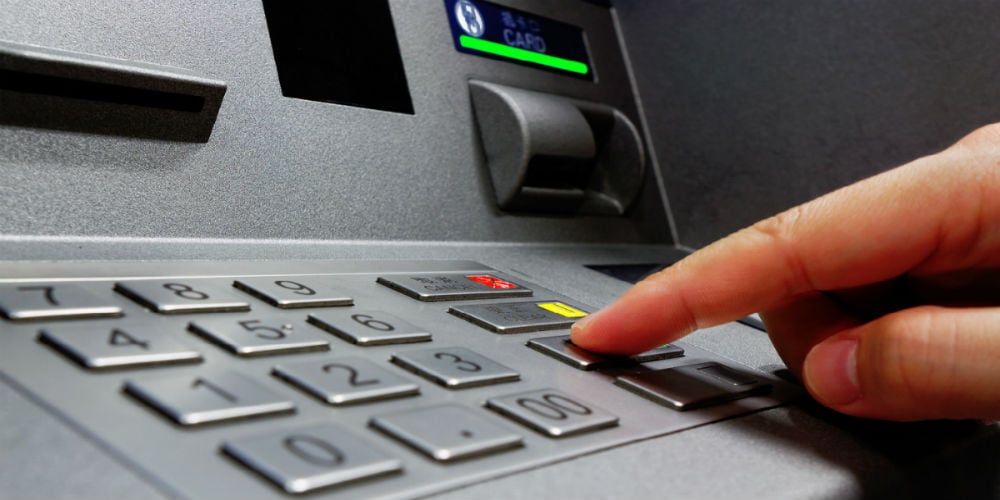Throw out your debit cards – the cardless revolution

It was about four years ago that the first word came out about cardless ATM access, via a trial at Wintrust Financial bank locations in the Chicago area. In 2015, Wintrust was the first to roll it out across its ATM footprint comprising several hundred machines. And now cardless ATM access just may be about to go mainstream, as mega-banks such as Chase seem ready to give it a tumble.
The reason: nobody likes ATM cards, except maybe the companies that make money printing them up and delivering them.
Credit unions need to hop on this train before it leaves the station.
Many financial institutions – forced to replace debit cards because of many retail breaches – have begun to dream of a card-free world.
That dream now is coming true.
Then, too, cardless ATM access just may be significantly more secure than a plastic card.
In a 2016 white paper researchers at Javelin wrote: “Cardless Cash capitalizes on… emerging trends by giving mobile-first bankers the control they desire, removing the threat of skimming or surfing at the ATM, and enabling them to take the first step toward a card-free future.”
Here’s how cardless ATM access works. Before arriving at the ATM, the consumer “stages” a withdrawal – that is, designates an account and an amount and, where appropriate, the kinds of bills desired.
Arrive at the ATM and — although there are variations from bank to bank – the usual drill is that the smartphone communicates its presence via near-field communication (NFC) to the ATM. Then the consumer enters a PIN or password. And the cash spits out.
QR codes have been used in some configurations.
In other variations the consumer taps his/her phone on the ATM’s keypad to tell the ATM it is present and ready for money.
Either way, ATM executives have told me this process is several times faster than a traditional ATM withdrawal. This usually is a matter of seconds, not minutes, but seconds can make a difference in a blustery Boston ice storm or a 115 F Phoenix afternoon.
Sounds good? Be patient. Nobody thinks we will convert overnight to cardless ATM access – best guesses are the process will take five to ten years, as consumers need to learn new habits and, in many cases, ATMs need to be tweaked with software and often hardware upgrades.
Just as the switch to mobile payments is taking time, so will the conversion to cardless cash.
But optimism that it will happen – that we will jettison our debit cards – grows high.
Chase now has tests of cardless cash running over hundreds of ATMs in four cities. Chase is said to have another 6000 ATMs – roughly one third of its fleet – upgraded and ready to go with cardless cash access.
Bank of America and Wells Fargo are said to plan wide rollouts of cardless ATM access by year-end 2017.
“It’s about having the choice,” Jonathan Velline, Wells Fargo’s head of ATM and branch banking, told the New York Times.. “If you’ve lost your card or left home without your wallet, chances are you still have your smartphone in your hand.”
The money question: Is cardless cash access as safe as access via debit card?
For one thing, cardless access simply is not susceptible to the skimming that has plagued ATMs for decades. That may be dwindling in October with the VISA EMV deadline but, until then, many experts expect intensified skimming.
Plus, most of us are a lot more likely to notice that our smartphone has gone missing than our debit card – so early alerts would be sounded.
This doesn’t mean cardless ATM access is crook-proof. Security blogger Brian Krebs has documented how a thief used cardless access to pilfer $2900 from a Chase account at an ATM in Florida.
Krebs also noted that Chase said it had implemented policy changes to prevent future thefts of the same nature – but it was vague on details (as financial institutions usually are in such instances).
Very probably crooks will find more vulnerabilities in cardfree access processes – but institutions will rush to mend their fences as fast as the criminals steal.
So more and more financial institutions will begin adopting cardless ATM access.
At least a few credit unions – such as Vystar – already have tested cardless access.
The take-away for credit unions: start researching cardless access now and assume that before 2017 is over credit unions in the vanguard will jump into this. This trend is coming.





